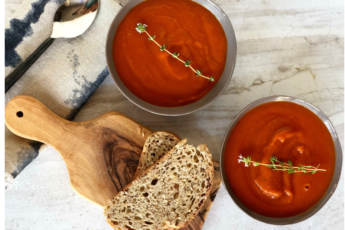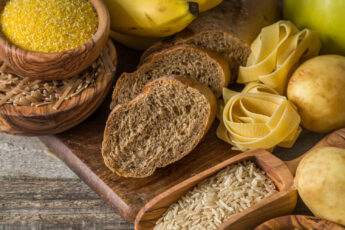September was Family Meals Month AND Fruits & Veggies Month, but let’s turn both into a habit, not a “month.”
Since I first wrote (here) about Family Meals Month in 2016, evidence on the benefits of families sharing meals has ballooned. The Food Marketing Institute (FMI) has compiled a mountain of research studies about the impact of family meals. The evidence is suggesting bennies of family meals extend past better nutrition, all the way to better emotional and behavioral health.
We’re talking about meals at home, and eaten together as a family, not a meal where everyone grabs a plate and disperses to look at their preferred screens. And the meal doesn’t have to be dinner. It could be breakfast, so no worries about a 2-hour affair (but if the convo is good, let it happen!).
Family Meals: “Food For A Better Mood”
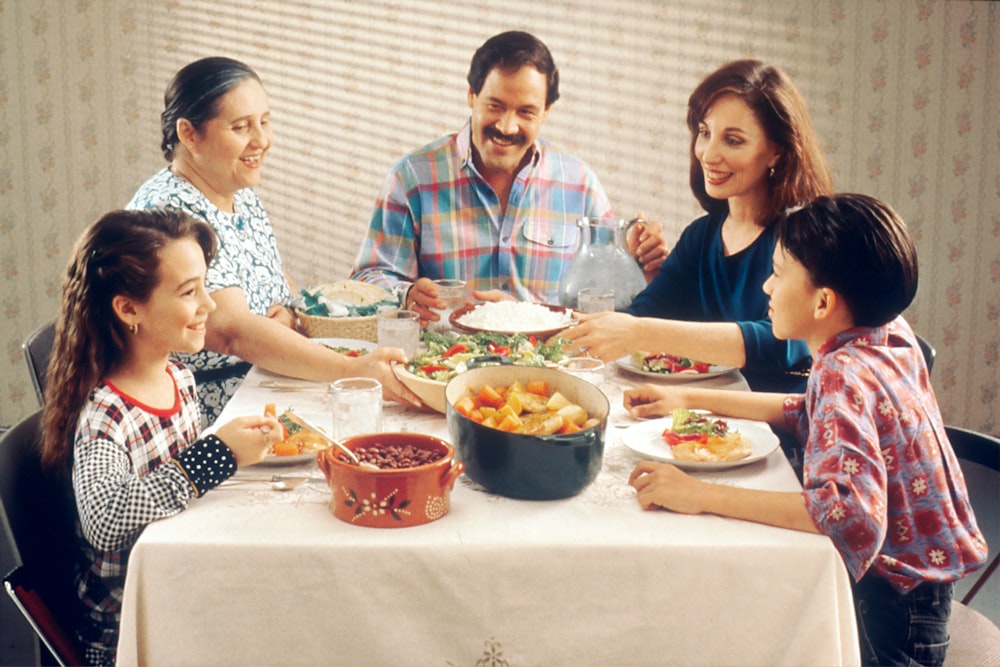
Photo by National Cancer Institute on Unsplash
The adolescents & teen years can bring all manner of emotional ups and downs, owing to many factors, including just normal developmental stages. How could having more family meals help? In this study, adolescents reported how they felt on days when they shared a family meal:
→ Greater happiness and role fulfillment
→ Less burnout and distress
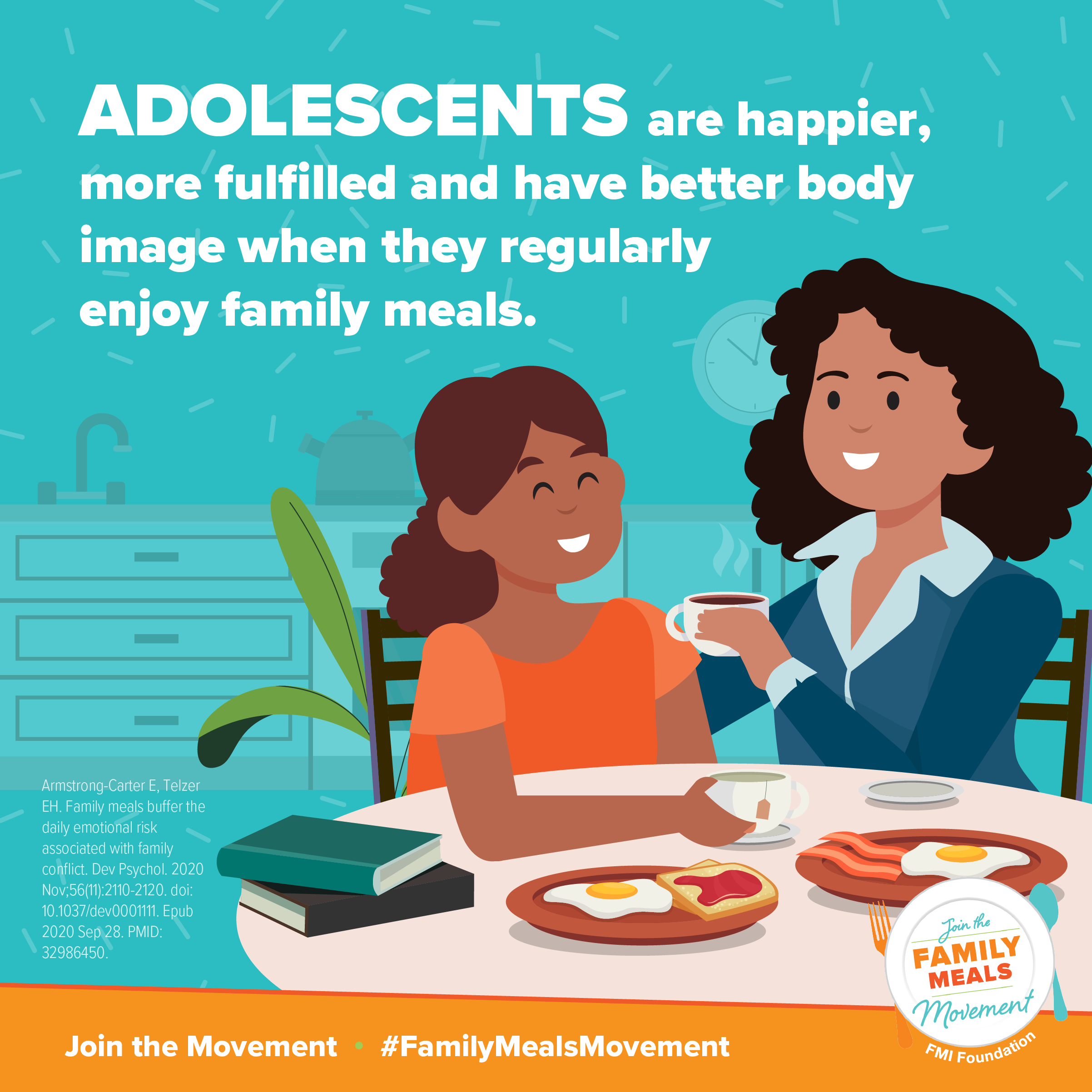
Graphic: Courtesy of Food Marketing Institute
→ More negative emotions on days they didn’t share a family mealThese feelings really speak to aspects of adolescent self-esteem. Kids who feel better about themselves might engage in fewer risky behaviors— EXACTLY what this study found. Teens who ate at least 3 meals per week with their families are: →
3x LESS LIKELY to have used marijuana
→ 3.5x LESS LIKELY to have abused prescription drugs or to have used an illegal drug other than marijuana or prescription drugs
→ 2.5x LESS LIKELY to have used tobacco
→ 1.5x LESS LIKELY to have used alcohol
→ Show fewer symptoms of depression, suicide, and violence
The research couldn’t determine these benefits RESULTED from having more family meals, only that there’s a strong association between sharing meals more often as a family and lower risk of substance abuse.
Now, there is the possibility of a “chicken-and-egg” element in these results: the research can’t determine whether family meals are producing such great results or kids with better mental health might just have lifestyles that involve more family meals. But there are other bennies – for everyone – of having more meals as a family.
Family Meals “Two-Fer”: We Eat More Fruits & Veggies!
Only 1 in 10 people actually gets enough fruits and vegetables every day, but in this 2020 study, family meals were found to be POSITIVELY linked with higher fruit and vegetable consumption. The Produce for Better Health Foundation, compiled a zillion studies that found that people (all ages) who eat more fruits and veggies:
• Have lower risk of depression and anxiety disorders
• Have lower risk of and poor mental health overall
• Have better cognitive health
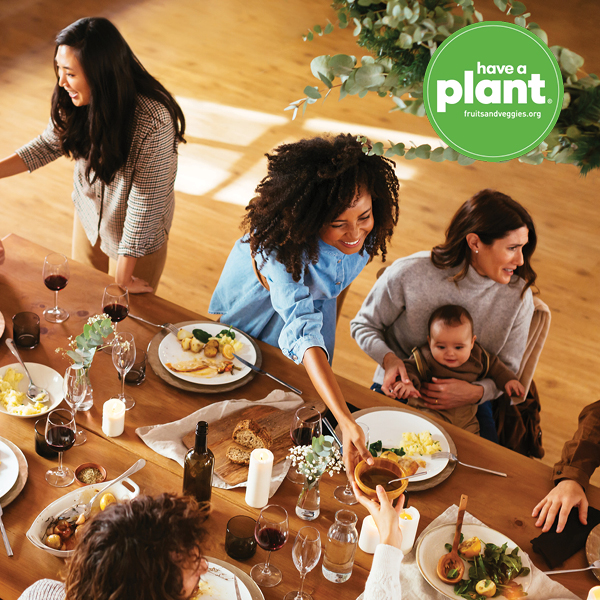 Again, these are “associations” which can’t indicate cause-and-effect, and mental health issues certainly need to be addressed with physicians and health professionals. Nevertheless, something I don’t say often I can say here:
Again, these are “associations” which can’t indicate cause-and-effect, and mental health issues certainly need to be addressed with physicians and health professionals. Nevertheless, something I don’t say often I can say here:
There’s no downside – and plenty of upside – to eating more fruits and veggies AND sharing more family meals. Who WOULDN’T want this for their kids (and themselves)?
Making It Happen
Since 9 in 10 people DON’T eat enough fruits and veggies, and nearly 2 out of 3 people decide what to eat less than an hour ahead of time (Hartman Group 2013), how do we get over this hurdle?
As with any project: planning. Meal planning is a total stress-buster. Plus, for limitless inspiration (recipes and a LOT of tips!), look no further than Produce for Better Health’s HaveAPlant site. A few tips:
HOUSE RULE #1: #HaveAPlant at every meal! It’s “good-mood” food!
HOUSE RULE #2: Family meals are about food, not phones. Stash ’em until the meal is over!
- Use convenience foods! Frozen/canned veggies and beans are lifesavers. Ditto bagged greens.
- Cook once, eat twice. Leftovers reduce food waste and make tomorrow’s dinner a snap to make, because you’ve already done a lot of the heavy lifting.
- Got teens & tweens? Everyone can pitch in. Start simple:
- Setting the table.
- Get ingredients from the pantry or the fridge.
- Wash veggies for a salad.
- Give kids a voice! Let kids choose the fruit or veggie (or veggie-inspired dish) that’s served. Kids EAT what they help make!
They may even like helping in the kitchen! If you get pushback, let them know these are LIFE SKILLS everyone needs. Kitchen prep is not beneath anyone. Super-important: thank them! Let them know you appreciate the help. We all need to feel valued.
“Thanks For The Memories”
If your kids gripe about eating together, don’t sweat it – 20 years from now they’ll be grateful. The FMI research found:
“9 out of 10 Americans express positive sentiments about the family meals experience.”
Cut-To-The-Chase Takeaway: Family Meals have an impact, a positive one – even if you don’t see it right away.
Featured photo: Photo by Lee Myungseong on Unsplash



